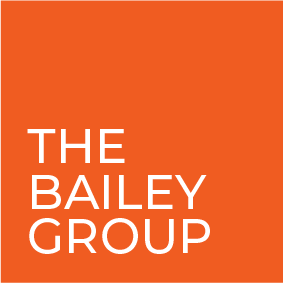
Understanding leadership competencies models
A leadership competency model is essential to high-performing organizations in today's business environment. The model is used by organizations as a framework to articulate and evaluate the specific knowledge, skill sets, and qualities their leaders (and potential leaders) must have for success.
A competencies model is primarily used by HR teams and senior executives to assess performance as it aligns with the needs of the organizations as well as to identify future leaders within the organization for professional development, making it a key driver of long-term growth.
The benefits of creating a leadership competencies model
The leadership competencies specified in the model will vary depending on the unique needs of the organization (based on its size, industry, and other factors). It is, however, an important exercise for all organizations to undertake because it helps them identify the specific skill sets required to ensure the long-term stability and success of the organization.
Some of the outcomes organizations can expect when they develop a clearly defined leadership competencies model include:
- Greater clarity and cohesion across the organization
- Better sense of leadership success qualities
- Lack of confusion about what leaders should be working toward
- Greater commitment from leadership teams
- More relevant leadership development programs
A leadership competencies model helps to both ground and guide members of the organization, serving as a highly useful tool to help junior staff understand how to advance to the next layer of leadership and senior managers know how best to succeed in their leadership role.
Developing a leadership competency model
When building a leadership competency model, it's important to start by identifying and articulating the leadership skills that align with the mission, culture, and values of an organization, which will help ensure that leaders are reinforcing and strengthening those organizational priorities.
This process requires deliberation and discussion across the entire organization, including all teams, leaders, and even input from junior staff. While overhauling the competencies model should be approached with caution, this should be viewed as an ongoing project — it's a good idea for organizations to make tweaks to their model as organizational priorities change and new information is gathered.
Organizations should also consider the specific challenges and risks they face in their market and industry. Every organization will be exposed to a different set of risks, and their model should emphasize the qualities needed to put leaders in the best position to address the challenges most likely to disrupt their market.
Leading self, leading others, leading organizations: The core pillars of the leadership competencies model
Leadership competencies models are generally structured along three main pillars: leading self, leading others, and leading organizations. As mentioned, the specific skills most appropriate to each pillar will be influenced by the specific requirements of the organization, but the following outlines a series of baseline skills typically required for each layer of leadership.
Leading self
Effective leadership starts with the individual leader, and it is critically important that each individual is able to manage their own immediate responsibilities and emotional responses to make them best able to lead their teams and organizations.
Some of the key skills required to effectively lead the self include:
Self-awareness
When managing self, it's essential that leaders can identify and understand their unique strengths and weaknesses. They can use this information to best leverage their strengths for the benefit of their teams and organizations while honing in on their weaknesses to either delegate tasks appropriately or work to improve them.
The best method for becoming self-aware is by using normed assessments in consultation with certified facilitators. Armed with knowledge gleaned from an assessment, leaders can recognize and process their own tendencies, ask themselves difficult questions, and strive to build an accurate understanding of their leadership and personal profile. To target and improve their weaknesses, they need to be comfortable moving outside of their comfort zone, ideally by working with a professional coach.
Remaining curious
Successfully managing the self requires that leaders remain curious. Those with an inquisitive mind tend to think of themselves as complex individuals with unique quirks, traits, and behaviors that can be learned (or unlearned) and understood through careful observation.
Good leaders are best able to identify their shortcomings and therefore understand how best to overcome their weaknesses and turn them into strengths. They are best positioned to learn new skills, engage in new experiences, learn the strengths and weaknesses of their teams, and use all of that information to improve the overall performance of the organization.
They also refuse to believe they have all the right answers. They know good ideas can come from any resource, department, or level of the organization, and that makes them willing and able to listen to feedback and use it to enhance their approach.
Leading others
Once the leader has learned how to manage their own attitudes and behaviors, they can begin to turn their focus outward to leverage their skills in leading their immediate teams and direct reports.
Some of the essential qualities required to lead others include:
Empathy
Personal connection is at the core of leading others successfully. A good leader will have the interpersonal skills to demonstrate a sincere interest in the lives, goals, and perspectives of each team member. This will help them build a sense of trust and a strong bond between them and their teams, making it much easier for teams to operate cohesively. It also gives leaders the information they need to place team members in positions in which they are most likely to succeed, further helping to cement that trust between them.
Despite the benefits of demonstrating empathy in leadership, managers should be careful not to become too involved in the personal affairs of their team members, or they risk making their team members' personal struggles their own. Instead, they should strive to be compassionate witnesses to the struggles of others — allies and partners who can offer support and guidance while avoiding getting too enmeshed.
Conflict resolution
Team members are going to disagree, and sometimes those disagreements can escalate into conflict. While the most effective leaders understand that disagreement is healthy and debate can help encourage the formation and fine-tuning of new ideas, unchecked conflict can create tension, which can lead to resentment and rivalry.
Good leaders put mechanisms in place to channel disagreement into constructive debate and prevent it from devolving into unhealthy conflict. Instituting a culture of collaboration, open communication, and respect for others' viewpoints can help keep disagreements civil and productive.
Communication
The ability to communicate effectively is of central importance to virtually all other critical leadership competencies, making it one of the most important skills for good leadership. But it isn't just about how leaders communicate with others. It's also important for leaders to instill an open style of communication across their entire department or organization, encouraging team members to share their authentic perspectives without fear of judgment or retribution.
Employees should also feel safe raising important issues with their managers privately, which not only gives leaders the information they need to make improvements to the employee experience, but it also helps team members feel heard and respected.
Respect for differences
As organizations continue to become more culturally diverse and blended, leaders need to take meaningful steps to ensure both their teams and workforces at large reflect different viewpoints, perspectives, and lived experiences.
Great leaders have to demonstrate a sincere commitment to diversity, equity, inclusion, and belonging (DEIB). That starts with implementing an organizational culture that is respectful and welcoming of individuals from all backgrounds, especially those from historically marginalized groups.
But it doesn't end there. They also need to ensure all employees feel like they have a voice and can institute meaningful change, while providing them with opportunities to advance to leadership positions within the organization.
Leading organizations
Leaders, particularly those in senior leadership positions, must think about the organization as a whole. They are responsible for making critical decisions and guiding the organization to its future destination.
Here are some of the essential leadership skills for leading the organization at large:
Strategic thinking
Today's business world is in an ongoing and rapid state of change. As the COVID-19 pandemic made clear, change can be highly disruptive and unpredictable. Staying ahead of this change requires a strategic approach to leadership. That means crafting a compelling strategic vision to best position organizations to take advantage of change while also being catalysts for change within the organization itself.
But leaders have a more important strategic role than simply outlining a vision. They also have to do the hard work of putting plans and processes in place to actualize their ideas. Communicating their strategic goals to every member of the organization and clearly articulating where each individual fits is also essential to strategic leadership.
Decision making
Ultimately, leaders are the organization's final decision-makers. They are the individuals that employees rely on to realize their organizational goals, so they need the courage and confidence to put their plans for the future in motion.
Critically, leaders have to demonstrate a balance between deliberation and decisiveness. They need to communicate across all the relevant teams and departments when giving stakeholders a chance to express their viewpoints.
Too much deliberation, however, can lead to inaction and apathy, preventing the organization from making progress. That's why effective leaders also know when it's time to make final decisions (and stick with them), even if that means some people are going to be unhappy with their choice.
Developing a stronger leadership competencies model
At The Bailey Group, our approach to helping clients build a leadership competencies model for their organization is based on our experience building and fine-tuning our internal model. We take the time to engage with all members of our leadership team to identify the qualities and skills we need to maximize our organizational success. We give our mission and values a close look and ensure that the critical leadership competencies included in our model are properly aligned with those objectives.
This makes us better equipped to take clients through the same process in our coaching engagements. Every engagement starts by understanding the specific nuances of our client's competencies model and identifying areas where we can add value. We help them understand what good leadership looks like from the perspective of everyone on the team, and we use this information to help them build a more robust competencies model.
Reach out today if you are interested in engaging with our team of leadership coaches, and make sure to check out our blog if you want more leadership insights.




